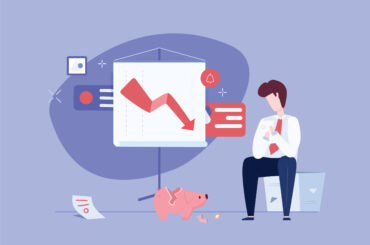There are several factors affecting working capital requirement. Understanding these factors and regularly assessing working capital needs helps businesses optimise their liquidity, minimise excess holdings, and ensure efficient financial management.
What is working capital?
Every business requires working capital for operations, growth, and expansion. It represents the operational liquidity and short-term financial health of a business.
There are two important components in working capital—current assets and current liabilities. While current assets are those that can be easily liquidated, current liabilities are debts that have to be repaid within a year.
Working capital is the difference between current assets and current liabilities.
What are the factors affecting working capital requirement
Determining the factors affecting working capital requirement of a business is important to make informed decisions.
1. Business size:
One of the most important factors affecting working capital requirement is the size of a business and the scale of its operations. A company that has multiple manufacturing units and operates on a large scale will have a large working capital requirement. However, they will also have better economic performance because of better bargaining power when compared to smaller business units.
2. Operating cycle length
The operating cycle length, also known as the cash conversion cycle, is a financial metric that measures the time it takes for a company to convert its investments in inventory and other resources into cash inflows. It provides insights into the efficiency of a company’s working capital management and operational processes. The operating cycle is typically divided into three main components:
a. Days inventory outstanding (DIO): Represents the average number of days it takes for a company to sell its inventory. It is calculated as:
DIO = Average Inventory / Cost of Goods Sold (COGS ) per day
b. Days sales outstanding (DSO): Reflects the average number of days it takes for a company to collect payment from its customers. It is calculated as:
DSO = Accounts receivable / Net Sales Per Day
c. Days payable outstanding (DPO): Represents the average number of days a company takes to pay its suppliers. It is calculated as:
DPO = Accounts Payable / Cost of Goods Sold (COGS) per day
The operating cycle length is then calculated as the sum of DIO, DSO, and DPO:
Operating Cycle Length = DIO + DSO + DPO
Interpretation:
- A shorter operating cycle indicates that a company is efficiently converting its investments into cash, which is generally favourable.
- A longer operating cycle may suggest inefficiencies in inventory management, receivables collection, or payables management.
Key points:
- Efficient working capital management aims to minimise the operating cycle length, ensuring that the company’s resources are utilised effectively to generate cash flow.
- Monitoring and analysing the components of the operating cycle help identify areas for improvement in inventory turnover, receivables collection, and payables management.
3. Seasonality
Many season-specific businesses don’t see much sales throughout the year. Instead, they witness a surge in sales during a particular season only. For example, businesses selling woollen garments or umbrellas/raincoats experience a surge in demand during winters and monsoons respectively.
The rise in demand lasts for a few weeks or maximum for a few months. The business invariably requires more working capital to meet the increased demand during the period which illustrates why seasonality is one of the crucial factors affecting working capital requirement.
4. Scale of operations
Larger companies typically have more extensive operations, including higher sales volumes and larger production capacities. This can result in higher levels of inventory and receivables, influencing a larger working capital requirement. Smaller businesses may have limited production capacity and lower sales volumes, leading to comparatively lower levels of inventory and receivables. Their working capital needs may be more manageable in scale.
5. Business sales
The volume of sales significantly influences the working capital needs of a business. When aiming to boost sales, an entity must uphold substantial levels of current assets, including inventory and cash. This strategic approach ensures the capacity to meet demand and sustain daily operations.
6. Technology and production cycle
The choice of technology in the production process is one of the pivotal factors affecting working capital requirement. In scenarios where a company adopts a labor-intensive production approach, there’s a heightened need for working capital to ensure a consistent cash flow for compensating laborers. Conversely, if the production process relies on machine-intensive techniques, the demand for working capital is notably reduced.
Additionally, the duration of the production cycle plays a crucial role. A business engaged in a prolonged production cycle necessitates more working capital due to the extended time required to transform raw materials into finished goods. Conversely, a shorter production cycle correlates with reduced working capital needs, as fewer funds are essential for inventory maintenance and raw material procurement.
7. Inventory management
The inventory management policy adopted by a company holds significant sway over its working capital needs. Even for smaller businesses, a substantial working capital requirement becomes imperative when dealing with extensive inventories, irrespective of the turnover pace.
To illustrate the importance of inventory management, consider this scenario: Imagine a business owner opting to accumulate raw materials well in advance of production. In such a case, the working capital requirement surges significantly as resources remain tied up until the entire production process concludes.
Contrastingly, envision a company embracing the JIT (Just In Time) inventory management policy, where raw materials are sourced precisely when the need arises. In this scenario, the working capital requirement diminishes substantially.
8. Collection cycle
The average timeframe required to collect proceedings of sale is referred to as the collection cycle. Influential factors, such as industry norms and the creditworthiness of clients, shape the dynamics of this cycle.
Opting for a liberal collection cycle places a higher demand on working capital, as funds are tied up for an extended period. On the contrary, a business adhering to a short-term or stringent credit policy can function efficiently with reduced working capital requirements. Strategic decisions regarding the collection cycle play a crucial role in balancing cash flow and optimising overall financial stability.
9. Credit availability
Credit availability, the duration a business takes to receive credit from suppliers, is one of the key factors affecting working capital requirement. This factor is particularly significant for smaller businesses where payments drive sales and contribute to securing additional orders. The intricacies of credit availability become especially apparent in scenarios involving missed or deferred payments, directly impacting the working capital equation.
Consider a business owner facing short-term liabilities or having utilised a working capital loan previously. In such cases, the working capital costs, including repayment, contribute to heightened working capital requirements.
Contrastingly, when a business benefits from favorable terms for raw materials and ensures timely payments, the working capital requirement diminishes significantly. Strategic management of credit availability not only influences cash flow but plays a vital role in optimising overall working capital efficiency.
10. Inflation
Fluctuations in raw material and labor costs can significantly impact a company’s working capital needs. When faced with cost increases, there is a natural escalation in the requirement for working capital. However, a strategic counterbalance comes into play when a company can concurrently adjust the prices of its products.
In a scenario where a company can effectively raise product prices in response to increased costs, the impact on working capital is mitigated, and the need for additional funds is reduced.
It’s essential to recognise that the effects of price increases vary across different businesses. Each industry and business model respond uniquely to such shifts, highlighting the importance of a nuanced understanding of working capital dynamics in the face of evolving cost structures.
11. Competition
In a competitive market, businesses find themselves compelled to adopt a liberal credit policy and ensure timely delivery of goods to stay competitive. Effectively managing large inventories becomes a necessity, driving the requirement for a higher level of working capital. This proactive approach enables businesses to meet customer demands promptly and maintain a competitive edge.
Conversely, in situations where competition is limited, or a business holds a monopoly position, the dynamics shift. With the ability to dictate terms and conditions, businesses in such scenarios require less working capital. The reduced competition empowers them to set the pace, emphasising the strategic influence of market conditions on working capital needs.
A tabular representation would help you take a glance at the factors affecting working capital requirement:
| Factors affecting working capital requirement | Requirement of more working capital | Requirement of less working capital |
| Length of the operating cycle | A long operating cycle corresponds to more working capital requirement | When a business has a short operating cycle, it requires less working capital |
| Business size | A large company with multiple units spread across various geographical locations needs more working capital | Smaller businesses require much less working capital |
| Seasonality of the business | Businesses need more working capital during peak seasons to address high-demand | Businesses require less working capital at other times of the year |
| Scale of operations | Businesses operating on a larger scale need more working capital to maintain their inventories | Businesses operating on a smaller scale need much less working capital |
| Business sales | A business that sees high sales turnover requires more working capital | Businesses that experience low sales turnover require less working capital |
| Technology and production cycle | More working capital is needed if a company employs many labourers and has a long production cycle | Less working capital is required if a company has a machine-intensive production technique |
| Inventory management | Businesses would need more working capital if they decide to stock up on raw materials beforehand | Less working capital is required if businesses procure raw materials just before they go into the production stage |
| Collection cycle | More working capital is needed when a business decides to follow a liberal collection cycle | Less working capital is required when businesses follow a policy of strict collection cycle |
| Credit availability | More working capital would be required if purchases are not paid for instantly/in short-time | Less working capital is required when businesses receive credit on favourable terms and conditions |
| Inflation | During inflation, more working capital is required to address high price levels | During deflation, less working capital is required by a business |
| Competition | Businesses need more working capital to address high levels of competition | Businesses require less working capital when the level of competition is low |
Why should you assess factors influencing working capital requirement
- A comprehensive analysis of factors affecting working capital requirement provides valuable insights to formulate a strategic roadmap for future growth and expansion. It allows businesses to align financial resources with evolving operational needs.
- Regularly checking factors affecting working capital requirement is fundamental for the seamless functioning of the business. It ensures that the necessary financial resources are readily available to meet day-to-day operational demands, preventing disruptions.
- Maintaining optimal levels of working capital is not just a financial necessity but a crucial element in upholding the goodwill of the business. Adequate working capital signifies stability, reliability, and the ability to meet commitments, enhancing the overall reputation of the business
How to get working capital for your business?
You can apply for Razorpay Working Capital Loans for your business.
Check out its benefits below:
- Quick disbursal
Experience minimal waiting times for account activation and withdrawal processing. This swift turnaround ensures that businesses in urgent need of funds can access instant cash.
- Flexible repayments
Enjoy the convenience of repaying through flexible and straightforward EMIs. Tailor the repayment tenure to suit your preferences, with no pre-closure charges required.
- Affordable financing
Get collateral-free loans depending on your cash inflows instead of guarantees and high credit scores.
FAQs
-
What is working capital and its different types?
Working capital represents the funds available for a company’s day-to-day operational activities. It helps drive business growth and expansion. Gross working capital, net working capital, permanent working capital, regular working capital, and variable working capital are the different types of working capital.
-
What are the main components of working capital?
There are four main components of working capital. These are inventory, trade receivables, cash & cash equivalent, and trade payables.
-
How to calculate working capital?
Subtract current liabilities from current assets to arrive at the working capital of a business. While current assets are components that can easily be converted into cash, current liabilities are payable debts or bills.
-
What is the scope of working capital?
Every business requires working capital because it helps evaluate its profitability and increase the possibility of receiving financing. It helps maintain production flow and improves an entity’s creditworthiness and liquidity.
-
When is working capital a problem?
Poor performance of sales and increase in receivables cause working capital problems. Apart from these, bad quality of products, inefficient inventory management, and delays in paying suppliers are other factors that contribute to working capital problems.





